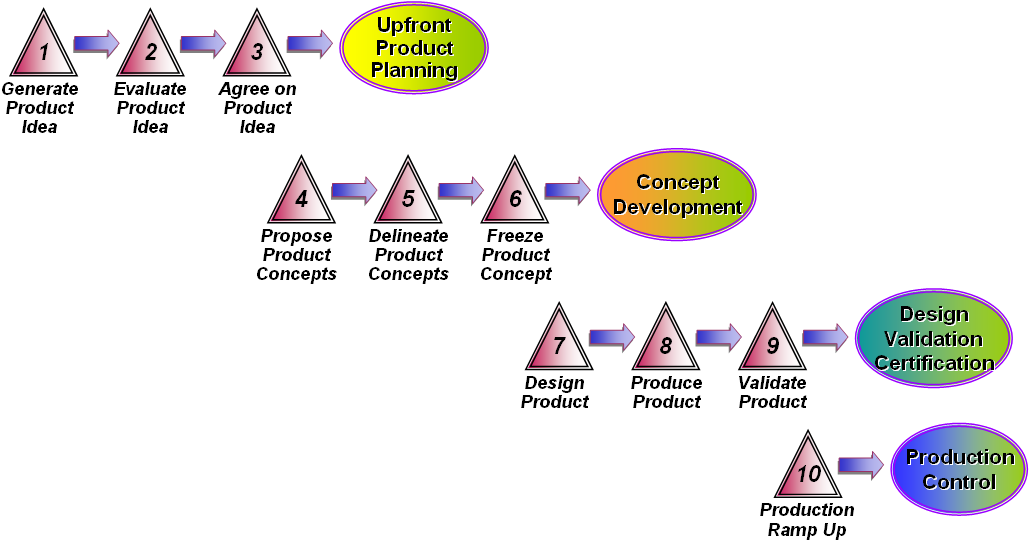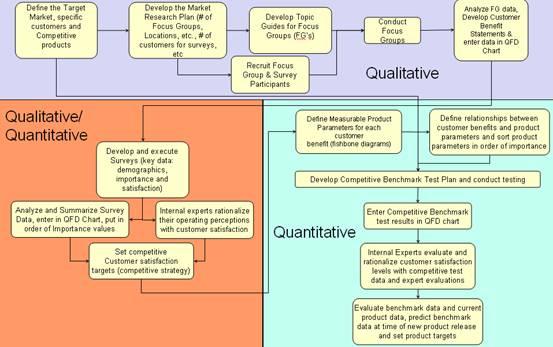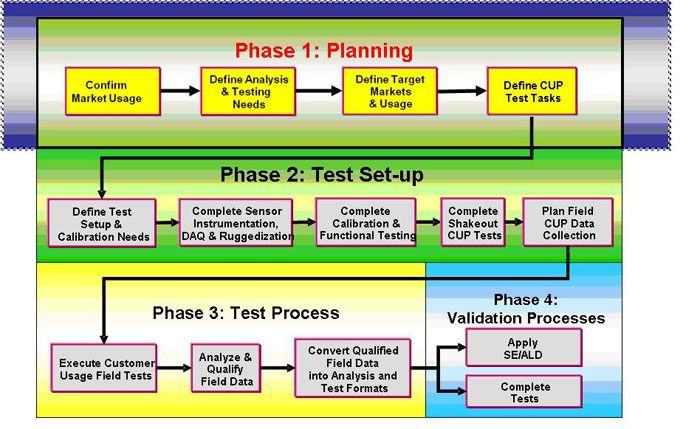Since 1985, ITI exerts their efforts on NPI (New Product Introduction) development for global fortune 500 companies to help those companies develop world class product development process.
The process is called CPPD® (Concurrent Product and Manufacturing Process Development), which was initiated in 1980’s from GEAE, which is located close to ITI’s headquarter in OH, Cincinnati. During the cooperation between ITI and GEAE, ITI utilizes their decades of experiences on process consulting/simultaneous engineering, advanced technologies including target setting process (QFD) and LIMM (Linked Intelligent Master Model) and reliability maturity process (RPM) to help GE reduce the development time from 60 months to 24 months and improve the reliability more than 30% than the baseline aircraft engine.
Then ITI implemented CPPD for many other industries such as automotive (Ford), Heavy industry (Volvo, LG, CAT etc), Aerospace (NASA, LM) etc and formalized those as standard process for all industries, as shown below.

CPPD® overall process and tollgates is as shown below. It is the overall process of optimizing and integrating overlapping development phases and supporting tasks, governed by gated milestones, from product and project planning through concept, detail design, physical prototyping and production. Often, ITI consulting involves adaptation of CPPD® practices and processes into existing client product development processes.
The overall strategies of CPPD® Process are:
- All technologies to be proven prior to launch
- Must achieve all targets during pre-launch (weight, cost, schedule)
- Must identify all participants, all suppliers during pre-launch activities
- Do not start detail design until ALL requirements are established, technical and program
- All hardware for certification program identical.
- Program to be focused on certification
- Risk Management plans to cover key program contingencies
The key points of CPPD® Process are systematically product planning/target setting and SE/ALD (System Engineering/Analysis Leads Design) to make sure the customer requirements are well captured, product targets are set systematically before concept design is started. In concept design phase, use system engineering to make sure the product targets are cascaded from product level to system/component level and system models are created and validated by baseline test so that multiconcepts can be done to reduce number of proto and test so that TTM and cost is reduced significantly.
Under the umbrella of CPPD, we provide 2nd level process to support the whole CPPD, which includes:
1. Target Setting Process, the systematic process to capture customer voice, translate the subjective customer benefits to product characteristics and set targets with competitive benchmarking and tear down (as needed).
2. CUP Process, the way of how to collect the load and duty cycle in real customer usage case. By plan what simulation and test needs, we set up and execute the test to collect the load to understand how the customer really uses the product and use the load as input for design better product with simulation and test.
3. SE/ALD Process
As mentioned above, the key process of CPPD is SE/ALD, which means how to build up system models (Structure & Fatigue, dynamic, NVH, flow/heat etc…) before detail design starts and verify product performance by using those virtual system models to reduce physical prototypes, test time and development cost.
4. Reliability Process.
ITI’s RPM (Reliability Process Management) process defines how to plan, execute and validate reliability before start of product, which shift the traditional fail-and-fix reliability process to proactive process. Typically it will be implemented in parallel with CPPD process to ensure the product reliability, while the performance is ensured by SE/ALD.
5. SEDM Solutions
In CPPD process, most of development time and cost is spent in upfront engineering, which results in many development data such as concept models, CAE, CAT results and WIP data. Those are intelligent knowledge of a company, which must be stored and reused for future product development. Consys works with ITI to provide SEDM (System Engineering Data Management) solutions with platform “ProjectView” to make sure those WIP data are well captured.
CPPD® Process is a new product development paradigm shift and needs top management from a company to continuously invest and strong support for culture changes.





 Target SettingITI Target Setting Process Qualitative phase including Define target market, target customer and target competitors Define number of focus group/locations and customer to be surveyed Conduct interview to finalize customer benefits Cond.
Target SettingITI Target Setting Process Qualitative phase including Define target market, target customer and target competitors Define number of focus group/locations and customer to be surveyed Conduct interview to finalize customer benefits Cond. Tear Down ProcessITI Tear Down ProcessWhat we offer Planning Define characteristics to be measured Define product complexity and structure Indentify Current Competitive Companys Products Define Team Member Develop Measurement Plan Execution S.
Tear Down ProcessITI Tear Down ProcessWhat we offer Planning Define characteristics to be measured Define product complexity and structure Indentify Current Competitive Companys Products Define Team Member Develop Measurement Plan Execution S. CUP is a method to measure and record how consumers use products in a normal operating environment CUP involves making physical measurements of mechanical systems (temperature, force, displacement, speed, strain, pre.
CUP is a method to measure and record how consumers use products in a normal operating environment CUP involves making physical measurements of mechanical systems (temperature, force, displacement, speed, strain, pre. SEALDThere are 3 typical development processes:This is very typical process before CAE technologies are well adapted into design process. Almost no CAE simulation is down in traditional development process so the building time and test is very long, .
SEALDThere are 3 typical development processes:This is very typical process before CAE technologies are well adapted into design process. Almost no CAE simulation is down in traditional development process so the building time and test is very long, . Challenges of ReliabilityTraditional Reliability Process No systematic process for reliability growth RG Planning for all changes not done Limited proactive RG Engineering done at system level Test results applied as best fit for RG - too late in pro.
Challenges of ReliabilityTraditional Reliability Process No systematic process for reliability growth RG Planning for all changes not done Limited proactive RG Engineering done at system level Test results applied as best fit for RG - too late in pro.